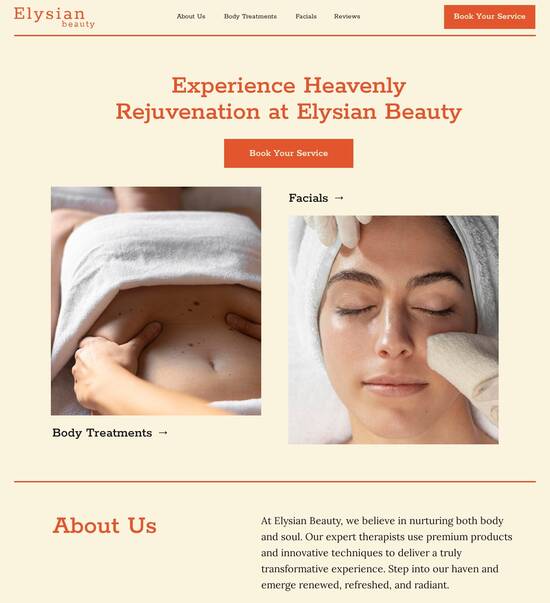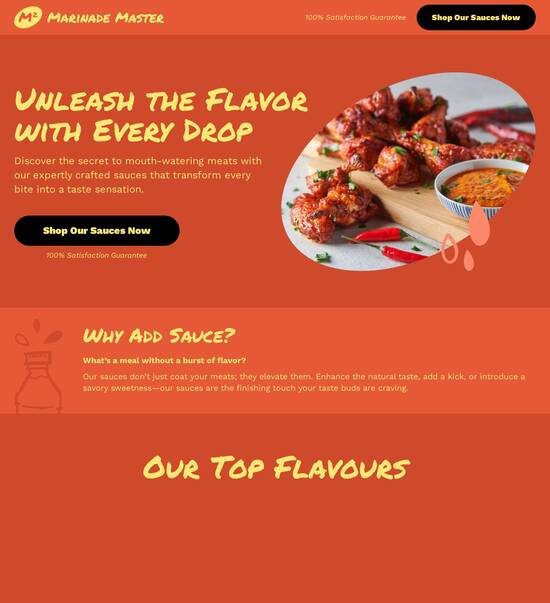
HTML page template with interactive volunteer application form
Explore Similar TemplatesAbout template
Use HTML page templates with interactive volunteer application form and make your communications easy and transparent. Try our solution today.
Recommended templates

Easy to build without coding
With the intuitive drag-and-drop builder, anyone on your team can create high-converting pages without any knowledge of code or design. Make enhancements to your landing page with custom widgets using Javascript, HTML/CSS, or third-party scripts.

Multiple layouts for any industry and goal
Select from 500+ landing page layouts built to boost conversions across industry-specific scenarios. Customize them by adjusting fonts, adding images, and generating on-brand content with the AI assistant. Quickly scale with Instablocks® and Global Blocks that you can save, reuse, and update globally.

Loads fast and looks polished on any device
Every template is responsive, which means they present professionally on any device and load blazingly fast with our Thor Render Engine. You can also power them up with Google AMP technology to deliver an unparalleled mobile experience and drive higher conversions.

Robust analytics & experimentation
Get real-time updates and reporting across all your devices, showing the number of visitors, conversions, cost-per-visitor, and cost-per-lead. Launch AI-powered experiments, run A/B tests, and use heatmaps to analyze user behavior, then optimize your landing page to maximize conversions.







Easy to build without coding
With the intuitive drag-and-drop builder, anyone on your team can create high-converting pages without any knowledge of code or design. Make enhancements to your landing page with custom widgets using Javascript, HTML/CSS, or third-party scripts.
Multiple layouts for any industry and goal
Select from 500+ landing page layouts built to boost conversions across industry-specific scenarios. Customize them by adjusting fonts, adding images, and generating on-brand content with the AI assistant. Quickly scale with Instablocks® and Global Blocks that you can save, reuse, and update globally.
Loads fast and looks polished on any device
Every template is responsive, which means they present professionally on any device and load blazingly fast with our Thor Render Engine.
Robust analytics & experimentation
Get real-time updates and reporting across all your devices, showing the number of visitors, conversions, cost-per-visitor, and cost-per-lead. Launch AI-powered experiments, run A/B tests, and use heatmaps to analyze user behavior, then optimize your landing page to maximize conversions.
All the features you need to build volunteer applications templates
Explore more featuresLearn how to build volunteer work form template
Frequently asked questions about volunteer application form template word
Leading the way in building high-performing landing pages





Volunteer application form template: Your ultimate how-to guide
Effective landing pages are critical in boosting conversion rates and maximizing the ROI of digital marketing campaigns. With Instapage, marketers can quickly create landing pages that not only attract attention but also optimize the user journey for better results. This guide will explore how to leverage Instapage to build high-converting landing pages effortlessly.
Understanding the basics of Instapage
Instapage is designed to be user-friendly and accessible for marketers with any level of expertise. Its intuitive platform offers over 100 professionally designed templates that make it easy to start from a strong foundation. With tools for collaboration, optimization, and personalization, Instapage ensures that teams can create impactful landing pages without the need for extensive coding or technical skills.
- Templates: Over 100 high-converting templates to select from, tailored for various industries.
- Intuitive builders: Use drag-and-drop functionality to customize and launch pages quickly.
- Lead generation: Integration of pre-built lead generation elements to capture visitor information effectively.
Step 1: Launch your landing page
To begin, select a template that aligns with your campaign goals. Customize elements to fit your branding and messaging. Here’s how to proceed:
- Choose a template: Browse Instapage's extensive library to find a template that suits your needs.
- Customize your page: Use the drag-and-drop editor to adjust text, images, and layouts.
- Integrate lead gen forms: Add forms that capture the essential data from your visitors.
Step 2: Optimize for conversions
Once your page is live, the optimization phase kicks in to ensure high performance. This involves a series of actions:
- A/B testing: Experiment with different headlines, colors, and layouts to see what converts best.
- Heatmaps: Use detailed heatmaps to analyze on-page behavior and identify areas for improvement.
- Analytics dashboard: Monitor performance metrics to refine your approach continuously.
Step 3: Personalize your user experience
Personalization is crucial in making visitors feel targeted and engaged. Leverage Instapage's features to drive this aspect:
- Dynamic text replacement: Tailor messages directly relevant to your audience segments.
- AdMaps: Align specific ads to tailored landing pages for a holistic experience.
- Audience tracking: Utilize data tools to assess engagement metrics at the audience level.
Following this step-by-step process with Instapage equips marketers with everything they need to create and optimize highly effective landing pages.
Ready to elevate your digital marketing efforts? Sign up for Instapage to begin transforming your campaigns today!
HTML page template with interactive volunteer application form
The power of HTML page templates for volunteer initiatives
HTML, or HyperText Markup Language, is the backbone of web development, forming the structure of web pages. It provides the necessary elements to build interactive and user-friendly applications. For volunteer initiatives, having a well-structured HTML template can streamline the way organizations collect applications, making it easier for potential volunteers to apply and for organizations to manage those applications effectively.
Templates play a vital role for nonprofit organizations, allowing them to present information in a clean, organized manner. Many organizations operate with limited budgets and resources; thus, leveraging pre-designed templates can significantly reduce development time and costs. Moreover, a professional-looking application form enhances credibility and encourages more people to apply.
We have come a long way from paper-based volunteer applications to digital forms. The transition to online applications has not only increased efficiency but has also made it easier for applicants to submit their information anytime and anywhere. The ease of accessibility significantly broadens the pool of potential volunteers, aiding organizations in their mission to engage more community members.
Crafting the ideal volunteer application form
Creating an effective volunteer application form requires careful consideration of various elements that meet both the organization's and volunteer's needs. Essential components usually include personal information fields, providing basic details such as name, contact information, and address. This information is critical for follow-up communication and building a connection with the applicant.
Furthermore, it's important to include availability and commitment information to assess how much time the volunteer can dedicate to the organization. Skills and interests sections help align volunteers with roles that suit their strengths, while references and background checks are vital for ensuring the safety and reliability of volunteers.
Personal Information Fields - Name, Email, Phone Number.
Availability Information - Days and hours available.
Skills and Interests - Relevant skills and areas of interest.
References - Previous volunteer experience and references.
Best practices for form design should also be taken into account. A visual hierarchy is crucial for ensuring readability, making it easy for applicants to navigate through the form without feeling overwhelmed. Additionally, ensuring mobile responsiveness is essential as many users will access the form on their mobile devices. Incorporating accessibility features guarantees inclusivity for all applicants, accommodating diverse needs.
Interactive features of the volunteer application form
To enhance user experience, interactive features must be integrated into the volunteer application form. One key aspect is real-time validation of user input. Implementing JavaScript for client-side validation helps to ensure that applicants enter the required information correctly before submitting the form, reducing the chances of errors and frustration.
Common validation techniques include checking for valid email formats, ensuring that required fields are filled out, and providing prompts for correction if the input is incorrect. Beyond validation, dynamic field generation based on user responses can tailor the application process according to the applicant's needs, making them feel more engaged.
Real-Time Validation - Ensuring correct user input.
Dynamic Fields - Tailoring application experience to user responses.
Leveraging document.addeventlistener in form functionality
Understanding event listening in JavaScript is crucial for creating a responsive volunteer application form. The document.addeventlistener method allows developers to execute code based on specific events, such as a user clicking a button or inputting information. Implementing 'DOMContentLoaded' helps ensure that the form elements are fully loaded before any interaction occurs, providing a smoother experience for the user.
By correctly binding events, developers can avoid common pitfalls, such as attempting to access elements that aren't yet available in the DOM. This way, the form will remain functional even as updates or changes are made. Furthermore, optimizing load times can reduce drop-off rates among applicants, increasing the likelihood of form submissions.
Creating an interactive layer for user engagement
Adding an interactive layer to the volunteer application form enhances user engagement. Tooltips and help text can guide applicants through the process, providing clarity on what information is required without cluttering the form layout. This feature is particularly useful for complex questions or requirements, minimizing confusion and ensuring a more pleasant user experience.
Dropdown menus and autocomplete features further streamline the application process by offering suggestions and reducing manual input. Predictive text can significantly minimize input errors, which encourages applicants to complete the form more willingly. Engaging applicants with these interactive features not only simplifies the user interface but also fosters a sense of support and guidance.
Connecting the volunteer form to your database
Linking the volunteer application form to your database is crucial for efficient information management. Understanding the difference between front-end and back-end technologies can help organizations decide on the best approach for handling form submissions. The front end is where users interact with the application, while the back end deals with data management and processing.
Choosing an appropriate back-end technology is essential for ensuring smooth data operations. Server-side languages such as PHP and Node.js are popular choices for form processing. Organizations might also consider utilizing APIs for enhanced functionality, allowing for integrations with other systems or platforms, such as email notifications or volunteer management software.
Quality assurance: testing and optimization techniques
Quality assurance is critical for ensuring that your volunteer application form works effectively. A/B testing can be conducted to measure different versions of the form, assessing which layout or question format yields better volunteer engagement. Key performance indicators (KPIs) might include submission rates, time spent on the form, and user feedback.
Using heatmaps to analyze user interaction provides valuable insights into how applicants are navigating the form. Furthermore, gathering feedback after form submissions through user surveys can highlight potential areas for improvement, ensuring that the form remains user-friendly and efficient. By leveraging analytics, organizations can make data-driven decisions that enhance the application process.
Styling the volunteer application form: aesthetic matters
A well-styled volunteer application form can significantly impact a user's decision to apply. Crafting visual appeal with CSS allows organizations to create an aesthetically pleasing layout that captivates users. Key principles like color psychology should be utilized to evoke emotions that align with the organization’s mission.
Utilizing icons and images can enhance the user experience by serving as visual cues, making navigation smoother while reinforcing the organizational identity. Additionally, fostering brand consistency is key—and ensuring that the application form reflects the organization's values helps to build trust and connection with potential volunteers.
Case studies: successful implementations of volunteer forms
Examining successful implementations of interactive volunteer forms can provide valuable insights for organizations looking to enhance their own application processes. Several nonprofits have utilized innovative designs and technology to streamline volunteer recruitment, resulting in increased applications and volunteer retention.
For instance, one organization adopted a mobile-friendly design combined with real-time feedback features, resulting in a significant uptick in completed applications. Analyzing their approach, organizations can derive key takeaways that inform their own strategies, emphasizing the importance of user experience and accessibility in the application process.
Future trends in volunteer application technologies
As technology continues to evolve, the future of volunteer application processes looks promising. The integration of artificial intelligence (AI) can streamline the application process by automating responses and helping to match volunteers with suitable opportunities based on their skills and interests. This technology can enhance user experience further by providing personalized recommendations to applicants.
Moreover, emerging technologies such as blockchain could ensure the security and authenticity of volunteer identities, while augmented reality (AR) could offer interactive orientations for new volunteers. Keeping abreast of these trends will allow organizations to remain competitive and deliver a modern volunteer application experience.
Tools and resources for building your volunteer application form
When it comes to creating an interactive volunteer application form, having the right tools at your disposal is crucial. Recommended libraries and frameworks like React or Vue.js can enhance interactivity, enabling developers to create dynamic user interfaces efficiently. Additionally, utilizing platforms such as Webflow can simplify the design process, offering robust functionalities without the need for extensive coding knowledge.
Furthermore, tapping into community contributions can provide access to open-source code snippets that cater to specific needs, allowing organizations to innovate their forms quickly and creatively. Accelerating the development process while ensuring quality and reliability can significantly impact overall volunteer program success.
The impact of a seamless volunteer application process on community engagement
A seamless volunteer application process directly influences community engagement levels. When applicants encounter a user-friendly application process, their likelihood of submitting their information increases, resulting in higher recruitment rates for organizations. Consequently, a smooth experience also enhances the organization’s reputation in the community, showcasing a commitment to accessibility and efficiency.
Long-term benefits for nonprofits include improved retention and engagement rates among volunteers. When volunteers feel valued and appreciated through an effective application experience, they are more likely to stay involved and contribute actively, enriching the organization’s mission while strengthening community ties.
Ready to skyrocket conversions?
Supercharge your ad campaigns with high-performing landing pages
Get started














